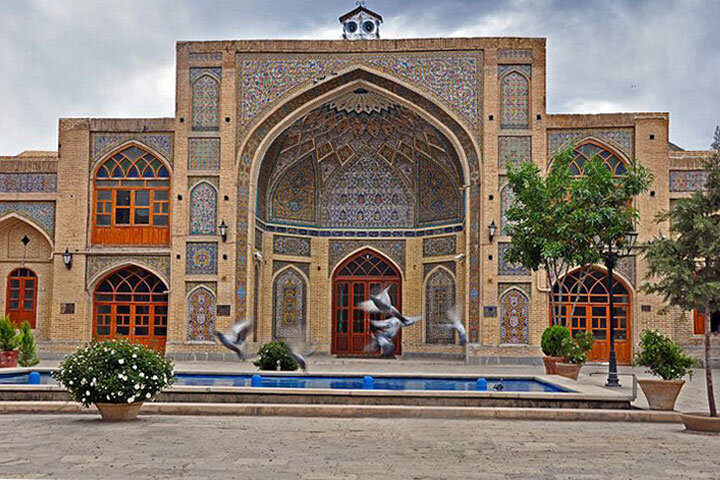Emad ud-Duleh Mosque: a testament to cultural exchange and spiritual significance

TEHRAN - Emad ud-Duleh Mosque stands as a unique architectural gem, located in the heart of Kermanshah city within the bustling traditional bazaar.
Positioned at the epicenter of social gatherings, this mosque holds a special spatial significance. Kermanshah, situated in a border region, serves as a melting pot of diverse beliefs and cultures, with influences from neighboring countries enriching its tapestry of religious practices.
As mentioned by Visit Iran, the mosque serves as a focal point for people from various backgrounds, reflecting its role as a gathering place for different social classes. Its architectural design reflects its public utility, eschewing the grandiosity typical of royal mosques of its era in favor of simplicity akin to future mosques and contemporary Iranian buildings. This simplicity is evident in its courtyard decorations, featuring a harmonious blend of unglazed narrow bricks and seven-color tiles.
The centuries-old mosque boasts a distinctive architectural style characterized by four iwans (vaulted halls), each housing different elements such as the façade, entrance, corridor (Hashti), central courtyard, prayer hall, watchtower, and chambers. The mosque’s layout, akin to a school or madrasa, provides accommodation for students of religious sciences within its surrounding chambers.
Emad ud-duleh’s patronage extended beyond architectural endeavors; he brought a door from Imam Ali Haram to Kermanshah and donated a silver door in return. This wooden door, dating back to the Safavid period, now adorns the mosque’s entrance, known as the “Qapi of Shah-e Najaf.” Another intricately decorated wooden door graces the southwest side, leading to the intersection of jewelers’ and Hoori Abad bazaars.
Stepping through the corridor, visitors enter a spacious courtyard adorned with beautiful tiling and inscriptions commemorating the mosque’s construction. The southern iwan, serving as the entrance to the main prayer hall, stands out with its elaborate decoration. The prayer hall itself features a vaulted ceiling supported by fourteen brick columns, with light filtering in through ceiling apertures.
The courtyard’s central feature is a newly constructed pool, while a small wooden room overlooks the eastern iwan. The main entrance, accessed through the eastern iwan, connects to the jewelers’ bazaar via a grand wooden door. A striking addition to the mosque’s architecture is a large Swiss-made clock adorning the minaret, symbolizing cultural exchange.
Emad ud-Duleh Mosque’s rich heritage is further enhanced by its exquisite tiling, high-quality wooden doors, and intricate brick pulpits. Its dual entrances from opposite sides of the bazaar underscore the city’s reverence for spirituality, echoing a bygone era where commerce and religion intertwined seamlessly. As a spiritual oasis amidst the bustling bazaar, Emad ud-Duleh Mosque stands as a testament to the enduring significance of cultural exchange and communal worship.
AM
Leave a Comment